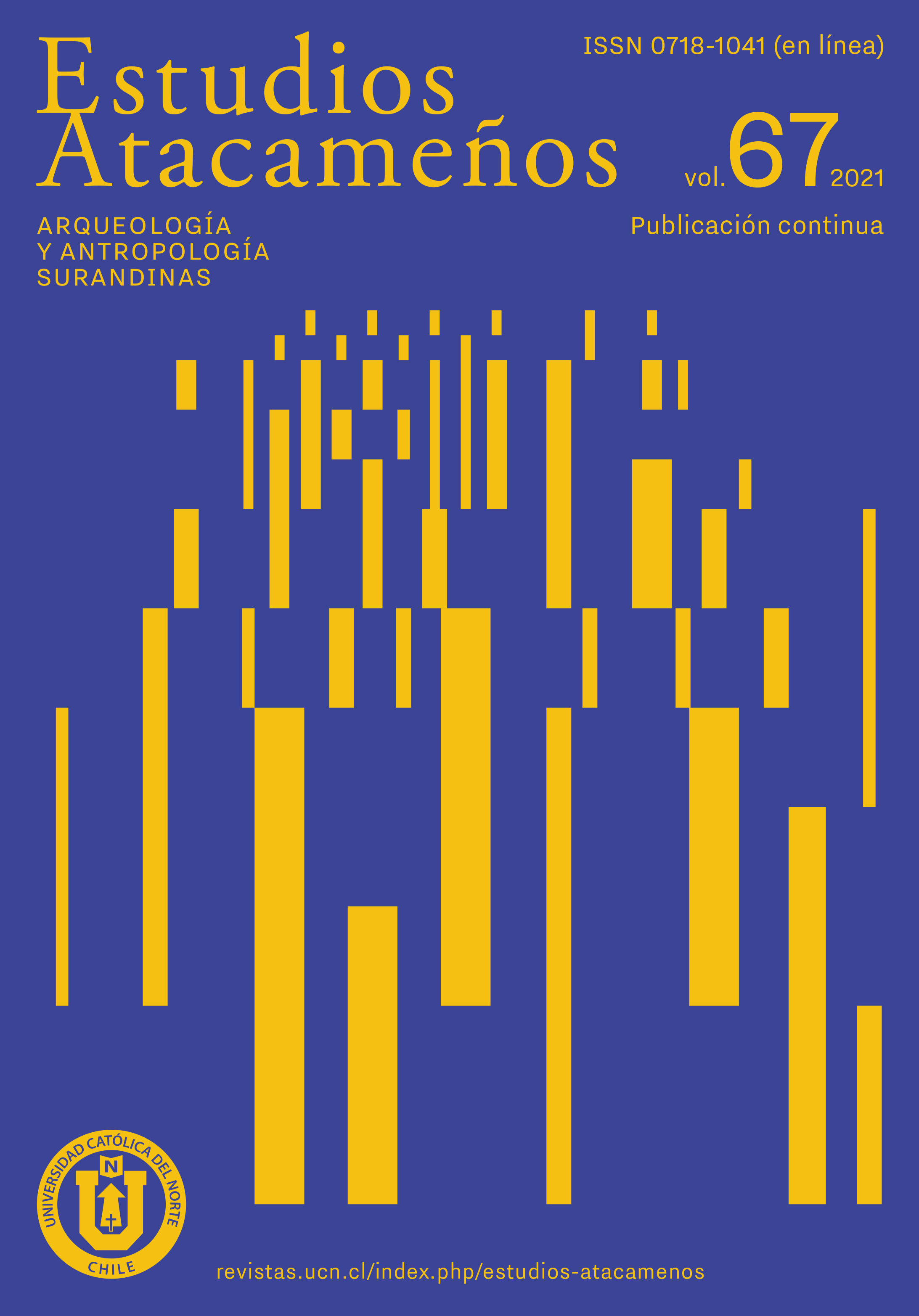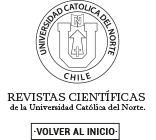Beyond the message of salvation
The uses of religious conversion in the Peruvian Andean South
DOI:
https://doi.org/10.22199/issn.0718-1043-2021-0035Keywords:
Adventism, Indigenous peoples, Peasant struggles, Tourism, AndesAbstract
The paper compares two periods in the history of a Quechua community (Amantaní Island, Titicaca Lake, Perú). They were moments of social conflict, in which the Seventh-day Adventist Church played a significant role. At each moment, different indigenous sectors, with different interests, and political and economic objectives, showed greater predisposition to religious change. This demonstrates the strategic nature of the conversion. But religious change was not necessarily a conscious strategy. The islanders do not notice the relationship between interests and the option of faith. Bourdieu's constructivist theory allows us to understand how the conversion coherently fits the objectives of each social group, even if it is not the result of planning. The research is based on three qualitative sources: participant observation, in-depth interviews, and public and private archives.
Downloads
References
Andrade, S. (2015). Protestantismo indígena: Procesos de conversión religiosa en la provincia de Chimborazo, Ecuador. Quito: FLACSO – IFEA.
Annis, S. (1987). God and production in a Guatemalan town. Austin, TX: University of Texas Press.
Armas Asín, F. (2002). Libertad religiosa, violencia y derechos humanos en el Perú de fines del siglo XX. En Marzal, M. (Ed.). La religión en el Perú al filo del milenio (109-137). Lima: PUCP.
Basadre, J. (1980). Elecciones y centralismo en el Perú: Apuntes para un esquema histórico. Lima: Universidad del Pacífico.
Bastian, J.-P. (1983). Protestantismo y Sociedad en México. México: CUPSA.
Berger, P.L. (2010). Max Weber is alive and well, and living in Guatemala: The Protestant ethic today. The Review of Faith & International Affairs, 8(4), 3-9. doi:10.1080/15570274.2010.528964
Bourdieu, P. (1979). La Distinction: Critique sociale du jugement. Paris: Les Éditions de Minuit.
Bourdieu, P. (1980). Le sens pratique. Paris: Les Éditions de Minuit.
Burga, M. y Flores Galindo, A. (1984). Feudalismo andino y movimientos sociales (1866 1965). En Historia del Perú: Procesos e Instituciones. Tomo XI. Lima: Juan Mejía Baca.
Caram Padilla, M. J. (1997). Identidades creyentes en tiempos de cambio: Católicos y adventistas aimaras del distrito de Pilcuyo, Puno. Allpanchis, 50, 9-68.
Carlsen, L. (1999). Autonomía indígena y usos y costumbres: la innovación de la tradición. Revista Chiapas, 7, 45-70. Recuperado de https://chiapas.iiec.unam.mx/No7-PDF/ch7carlsen.pdf
Carrasco, Pedro (1983). La autonomía relativa del campo religioso rural. Cristianismo y Sociedad, 76, 35-40.
Carter, W. E. (1965). Innovation and marginality: Two South American case studies. América Indígena, 25(4), 383-392.
Cleary, E. L. y Steigenga, T. J. (Eds.). (2004) Resurgent voices in Latin America: Indigenous peoples, political mobilization, and religious change. Piscataway, NJ: Rutgers University Press.
Cox, H. (1995). Retour de Dieu: Voyage en pays pentecôtiste. Paris: Descleé de Brouvner.
Crain, M. M. (1989). Ritual, memoria popular y proceso político en la sierra ecuatoriana. Quito: Abya-Yala.
De la Torre, R. (2014). El estudio de la religión en México enmarcado en el campo intelectual y el campo del poder. Sociedad y Religión, 24(42), 67-91. Recuperado de: https://www.redalyc.org/pdf/3872/387239045004.pdf
Diamond, S. (1989). Spiritual Warfare: The Politics of the Christian Right. Boston, MA: South End Press.
Discurso del alcalde de Capachica (23 de agosto de 1952). Los Andes, p. 8. Puno.
Flores Galindo, A. (1977). Arequipa y el Sur Andino: Siglos XVII-XX. Lima: Horizonte.
Foster, G. M. (1972[1967]). Tzintzuntzan. México: FCE.
Gascón, J. (1999). El control y explotación de la mano de obra colona en la hacienda andina peruana. Anuario de Estudios Americanos, 56(1), 195-215. doi:10.3989/aeamer.1999.v56.i1.293
Gascón, J. (2000). Sublevaciones colonas y reproducción del sistema de haciendas en el Sur Andino Peruano. Revista Española de Antropología Americana, 30, 265-289.
Gascón, J. (2005a). Compadrazgo y Cambio en el Altiplano Peruano. Revista Española de Antropología Americana, 35, 191-206.
Gascón, J. (2005b). Gringos como en sueños: Diferenciación y conflicto campesino en los Andes Peruanos ante el desarrollo del turismo. Lima: IEP.
Gascón, J. (2011). Turismo rural comunitario y diferenciación campesina: Consideraciones a partir de un caso andino. Mundo Agrario, 11(22). Recuperado de: https://www.mundoagrario.unlp.edu.ar/article/view/v11n22a01
Gascón, J. (2015). Turismo comunitario y vinculación religiosa en los Andes centrales. Revista Andaluza de Antropología, 8, 68-89. doi:10.12795/RAA.2015.i08.04
Gascón, J. (2017). Acabando con la administración de poblaciones: Razones y estrategias para reclamar la plena ciudadanía en la hacienda surandina peruana. En Bretón, V. y Vilalta, M. J. (Eds.). Poderes y personas (pp. 195-216). Barcelona: Icaria.
Gill, L. (1990). “Like a veil to cover them”: Women and the Pentecostal movement in La Paz. American Ethnologist, 17(4), 708-721. doi:10.1525/ae.1990.17.4.02a00060
González Prada, M. (1981 [1904]). Nuestro indios. En Horas de lucha (177-190). Lima: Universo.
Guerrero, A. (2010). Administración de poblaciones, ventriloquía y transescritura. Quito / Lima: FLACSO – IEP.
Habermas, J. (1985). Le discours philosophique de la modernité. Paris: Gallimard.
Hvalkof, S. y Aaby, P. (1981). Is God an American? An anthropological perspective on the missionary work of the Summer Institute of Linguistics. Copenhagen / London: Iwgia & Survival International.
Iturra, R. (1991). Factores de reproducción social en sistema rurales: Trabajo, producción de productores y pecado en aldeas campesinas. En Prat, L. et al. (Eds.). Antropología de los Pueblos de España (pp. 485-497). Madrid: Taurus.
Lalive d’Epinay, C. (1968). El refugio de las masas: Estudio sociológico del protestantismo chileno. Santiago: Pacífico.
López Jiménez, S. (2010). Estado y ciudadanía en el Perú. En Adrianzén, A. et al. (Eds.). El Estado en debate: Múltiples miradas (pp. 33-78). Lima: PNUD.
Mansilla, M. A., Leiva, S. y Piñones, C. (2020). Pentecostalismo de frontera y pentecostalismo de centro: Procesos de fronterización simbólica en el pentecostalismo altiplánico chileno-boliviano, 1973-2007. Estudios atacameños. Arqueología y Antropología Surandinas, 64, 297-318. doi:10.22199/issn.0718-1043-2020-0015
Mansilla, M. A., Muñoz, W. y Orellana, L. (2014). Los dilemas comunitarios y étnicos y religiosos: Las investigaciones antropológicas del pentecostalismo Aymara y Mapuche en Chile (1967-2012). Estudios atacameños. Arqueología y Antropología Surandinas, 49, 153-175. doi: 10.4067/S0718-10432014000300009
Mariátegui, J. C. (1975 [1928]). Prólogo. En Valcárcel, L. E. Tempestad en los Andes (pp. 9-15). Lima: Universo.
Martin, D. (1989). Tongues of fire: The explosión of Protestantism in Latin America. Cambridge: Basil Clackwell.
Marzal, M. (1971). El mundo religioso de Urcos. Cusco: IPA.
Meillassoux, C. (1979). Historical modalities of the exploitation and over-exploitation of labour. Critique of Anthropology, 4(13/14), 7-16. doi:10.1177/0308275X7900401302
Miller, E. S. (1970). The Christian missionary agent of secularization. Anthropological Quartelly, 53(1), 14-22. doi:10.2307/3316563
Miller, E. S. (1975). Shamans, power symbols, and change in Argentine Toba culture. American Ethnologist, 2(3), 477-496. doi:10.1525/ae.1975.2.3.02a00080
Mitchell, W. P. (1991). Peasants on the Edge: Crop, Cult and Crisis in the Andes. Austin: University of Texas Press.
Mücke, U. (2004). Elecciones y participación política en el Perú del siglo XIX: La campaña presidencial de 1871-72. Investigaciones sociales, 12, 133-169. doi:10.15381/is.v8i12.6887
Muratorio, B. (1982). Etnicidad, evangelización y protesta en Ecuador. Quito: CIESE.
Paerregaard, K. (1994). Conversion, migration, and social identity: The spread of Protestantism in the Peruvian Andes. Ethnos, 59(3/4), 168-186. doi:10.1080/00141844.1994.9981498
Peloso, V. C. (1996). Liberals, electoral reform and the popular vote in mid-nineteenth-century Peru. En Peloso, V. C. y Tenenbaun, B. (Eds.). Liberals, Politics and Power (pp. 186-211). London: University of Georgia Press.
Pérez, E. y Gascón, J. (1997). El impacto del turismo y de los proyectos de desarrollo de ONG’s en la estructura social y económica de dos comunidades andinas. Agricultura y Sociedad, 84, 225-252.
Portocarrero, G. (1995). El fundamento invisible: Función y lugar de las ideas racistas en la República Aristocrática. En Panfichi, A. y Portocarrero, F. (Eds.). Mundos interiores: Lima 1850-1950 (pp. 219-260). Lima: Universidad del Pacífico.
Reina, R. E. y Schwartz, N. B. (1974). The structural context of religious conversion in Petén, Guatemala: Status, community, and multicommunity. American Ethnologist, 1(1), 157-191. doi:10.1525/ae.1974.1.1.02a00090
Rodríguez, E. (1982). Un evangelio según la clase dominante. México: UNAM.
Salas, G. (2018). Evangelicalism in the Rural Andes. En Seligmann, L. J. y Fine-Dare, K. S. (Eds.). The Andean World (pp. 280-296). New York, NY: Routledge.
Sexton, J. D. (1978). Protestantism and modernization in two Guatemalan towns. American Ethnologist, 5(2), 280-302. doi:10.1525/ae.1978.5.2.02a00060
Smilde, D. (2003). Skirting the Instrumental Paradox: Intentional Belief Through Narrative in Latin American Pentecostalism. Qualitative Sociology, 26(3), 313-329. doi:10.1023/A:1024014225750
Ströbele-Gregor, J. (1989). Indios de piel blanca: Evangelistas fundamentalistas en Chuquiyawu. La Paz: HISBOL.
Spickard, J. V. (1998). Rethinking religious social action: What is “rational” about rational-choice theory? Sociology of Religion, 59(2), 99-115. doi:10.2307/3712075
Stoll, D. (1990). Is Latin American Turning Protestant?: The Politics of Evangelical Growth. Berkeley & Los Angeles, CA: University of California Press.
Teel, C. (1989). Las raíces radicales del adventismo en el Altiplano peruano. Allpanchis, 33, 209-248.
Teel, C. (2009). Histórias missionárias e o futuro do adventismo: Fernando e Ana Stahl como um estudo de caso. A Revista Formadores: Vivências e Estudos, 2(3), 467-477.
Willems, E. (1967). Followers of the New Faith: Culture Change and the Rise of Protestantism in Brazil and Chile. Nashville, TN: Vanderbilt University.
Worsley, P. (1968[1957]). The Trump shall sound: A study of Cargo Cults in Melanesia. New York, NY: Schocken Books.
Young, L. (1996). Rational Choice Theory and Religion: Summary and Assessment. New York, NY: Routledge.
Downloads
Published
Issue
Section
License
Copyright (c) 2021 Jordi Gascón Gutiérrez

This work is licensed under a Creative Commons Attribution 4.0 International License.

All works published in Revista Estudios Atacameños (ISSN on line:0718-1043) Revista Estudios Atacameños Creative Commons International 4.0 attribution (CC BY 4.0) licence.
Authors remain the owners of their work and may republish their articles elsewhere without having to request permission, as long as they indicate that the work was originally published in Revista Estudios Atacameños (ISSN on liine:0718-1043).












